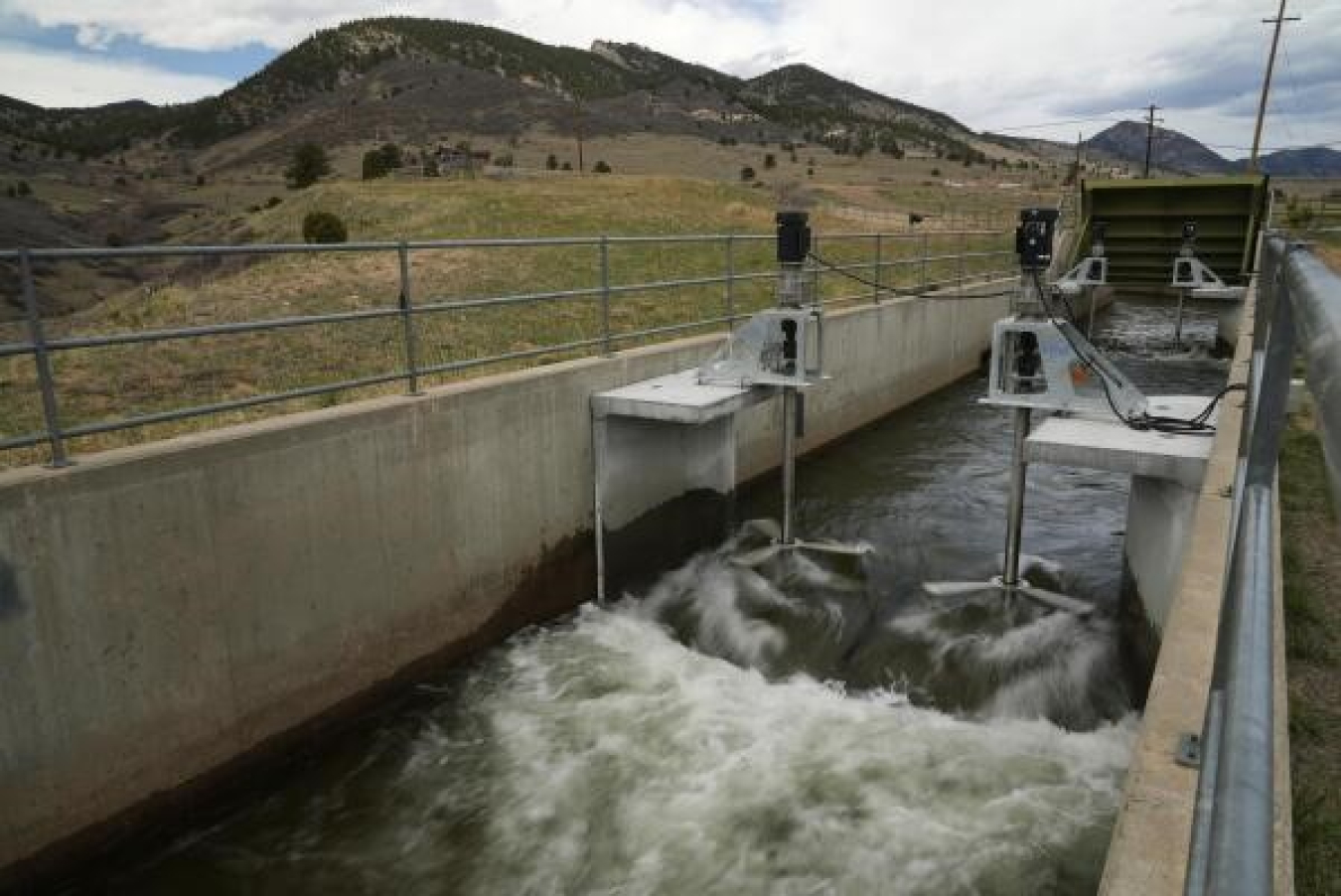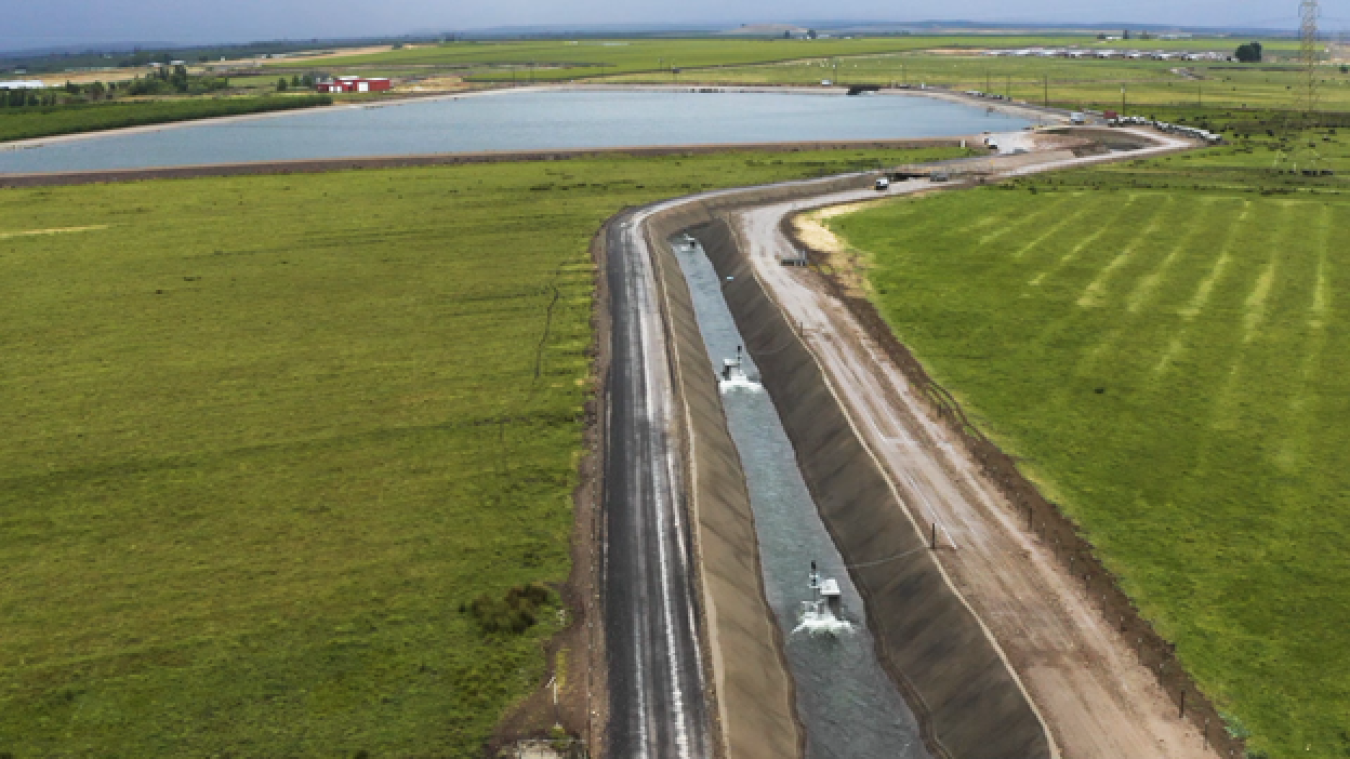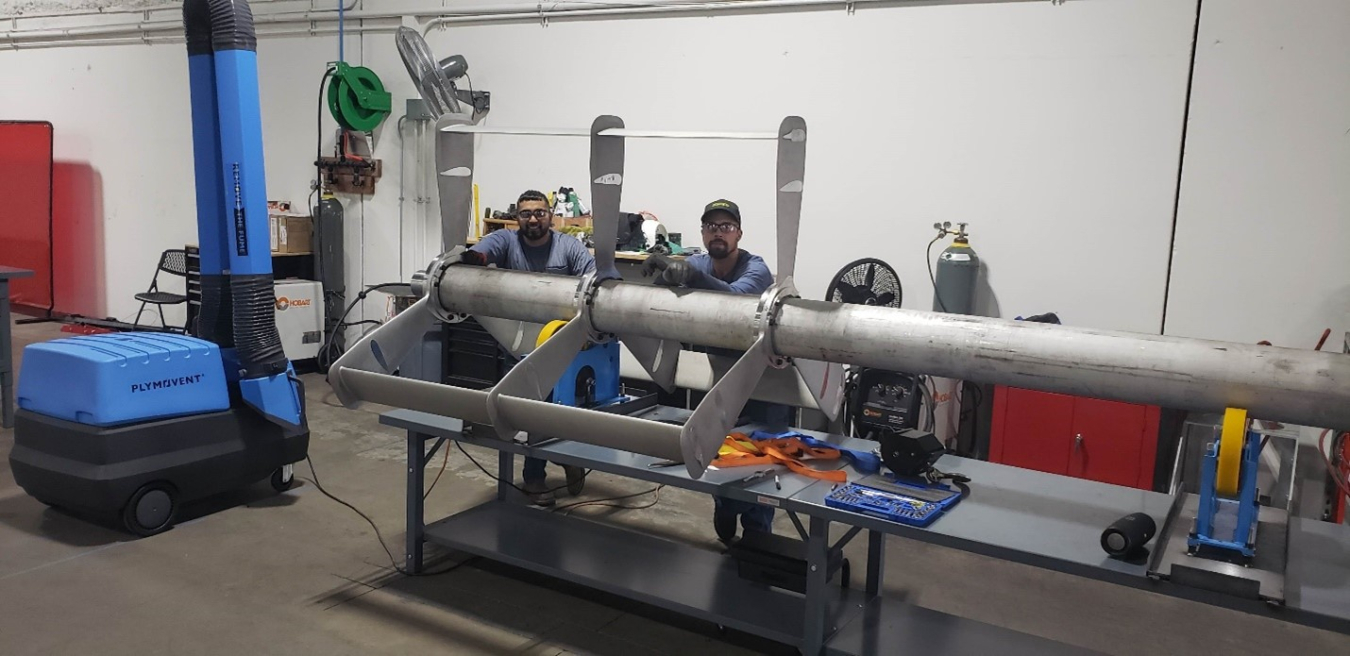Learn how Emrgy Inc. is harnessing power from existing waterways using a technology advanced with support from the U.S. Department of Energy.
Water Power Technologies Office
November 6, 2023The United States is home to a vast and intricate network of waterways. From flowing rivers to navigable canals, these water bodies have long served as lifelines for transportation, agriculture, and commerce, but they also create an abundance of opportunities for clean and reliable energy.
Wherever there is moving water, there is power. With an estimated 3.5 million miles of rivers and tributaries, along with 8,000 miles of canals owned by the U.S. Bureau of Reclamation alone, the United States has plentiful flowing water. While hydropower already provides 6.2% of all electricity in the United States, including 28.7% of renewable energy, much of this clean energy potential remains untapped. To capture this opportunity, the U.S. Department of Energy’s (DOE) Water Power Technologies Office (WPTO) invests in innovative, cost-effective hydropower technologies.
How Emrgy is Capitalizing on the World’s Waterways
Enter Emrgy Inc., a hydropower technology company founded in 2014 that has received more than $6 million from WPTO and other DOE offices since 2015. The company is harnessing the power of existing waterways around the world, with technology that offers a scalable, low-impact way to capture energy.

Most conventional hydropower plants use the elevation difference created by one large dam or diversion structure to generate power. Water flows in one side and exits at a lower point, spinning a turbine, which runs a generator and produces electricity. Emrgy, on the other hand, places standardized, kinetic-based turbines at different locations along the same waterway, aggregating the power from the various turbines as it flows by gravity downhill. Without disturbing the natural flow of water, water runs through these turbines, spinning them to generate power that is delivered to the grid. This unique approach means that hydropower can be generated from a wide range of sites that are potentially closer to where energy is needed.
“Decentralizing the power allows us to bring clean energy closer to where people live, broaden our reach for opportunities, and shorten transmission distances to make electricity more affordable,” said Emily Morris, founder and CEO of Emrgy.

The modular nature of Emrgy’s technology allows for multiple units to be added over time as the demand for electricity from a given site increases. Whether it's a small, kilowatt-scale deployment or a larger, megawatt-scale energy project, Emrgy's modular approach allows for flexibility and adaptability. The technology also boosts grid reliability; as the canals flow predictably, this hydropower can balance other renewables like wind and solar energy.
“We envision Emrgy’s system as part of a diverse, carbon-free energy mix at the distribution scale, providing local clean energy where and when they need it most,” said Morris.
From Concept to Implementation
Emrgy’s persistence over time was key to reaching its current level of success. Morris originally became introduced to the technology while working in a previous company that develops and tests technologies for governmental and commercial clients in military, transportation, and industrial settings. Morris was inspired by the commercial viability of this particular technology. “It quickly became clear that this technology was needed commercially as we pursue a carbon-free world,” reflects Morris. When her employer decided not to pursue commercialization plans, Emily followed her instincts to spin the technology into a new entity. Shortly thereafter, Emrgy was born.
Emrgy’s first DOE award was in 2015 through an opportunity that sought innovative ideas to harness hydropower that could be rapidly built, removed, and replaced when necessary, making this opportunity a good fit for Emrgy’s quickly deployable generators. This investment supported improvements in its technology and established a foundation for business growth. “The funding we received in 2015 gave me both the resources and the confidence I needed to build a company around this technology,” Morris said.
Emrgy now generates distributed hydropower in four U.S. states as well as in New Zealand. Most notably, the company recently raised more than $18 million from private investors, which allowed it to hire more people and develop projects in more locations. Morris emphasized that this is only the beginning, and there is still a long road ahead and more milestones to come. “We’ve proven the functionality and marketability of our technology. The next step is to prove its scalability, cost competitiveness, and contributions to grid resilience,” Morris stated.

Emrgy has expanded its footprint in the Denver area, establishing a new manufacturing facility to service the pipeline of projects throughout the West. The 30,000-square-foot facility currently supports an initial workforce of six staff with growth plans to reach 30 workers at scale. They manufactured the first fully in-house turbine in August and are developing the facility to accommodate up to 200 turbines per month. Further expansion through partnerships have also contributed to its growth, working with Enel Green Power in Italy and Xylem Inc. this year.
On the path to scaling the business, Emrgy values the tenured partnership with DOE. For example, this year it received a $1.1 million Small Business Innovation Research (SBIR) Phase II award for hybrid energy systems in agriculture and $200,000 in technical assistance for advanced turbine testing via the Testing Expertise and Access for Marine Energy Research (TEAMER) program. It was also recently selected by WPTO for a $1.6 million investment from the Bipartisan Infrastructure Law for a project focused on powering non-powered dams. These funds will help Emrgy grow its suite of modular, flexible hydropower technologies and transform former energy dissipation structures within canals to additional sources of clean energy without modifying the facility’s existing infrastructure. Emrgy also has work underway with DOE’s Advanced Research Projects Agency-Energy (ARPA-E).
Emrgy's story, rooted in years of dedication and persistence, showcases the impact that innovative technologies can have on shaping a sustainable energy future as well as the importance of federal and private joint ventures.
Hydropower can expand and play a bigger role in the clean energy mix by using the thousands of miles of waterways in the country to produce fully renewable power. Emrgy’s unique technology offers a decentralized, deployable solution that generates hydropower from locations that could not previously be considered, capitalizing on the massive potential for hydropower growth throughout the country.
To learn more about how Emrgy’s technology works, listen to Morris’ appearance on the Volts podcast.
Stay up to date with the latest hydropower funding opportunities, events, and news by subscribing to the monthly Water Wire and the bimonthly Hydro Headlines newsletters.

